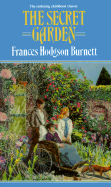
A Short History of Nearly Everything
Bill Bryson
(Anchor Canada (Random House), Toronto?: 2004)
READ: November 2007
I'd been wanting to read this book for months now, and boy, was it worth the wait. In his Short History, Bryson explains everything from the beginnings of life on our planet, to astrophysics, natural disasters, dinosaurs, and Einstein's theory of relativity, in plain, simple language. Well-known as a travel writer, Bryson brings his particular brand of humour to these, and many other questions of scientific import. Entertaining and elucidating, it's one of those books I should have taken notes on while reading. Well-documented, and well-thought out, this is one of the most entertaining and informative reads I've had in a while. My first Bryson book, but definitely not my last.

